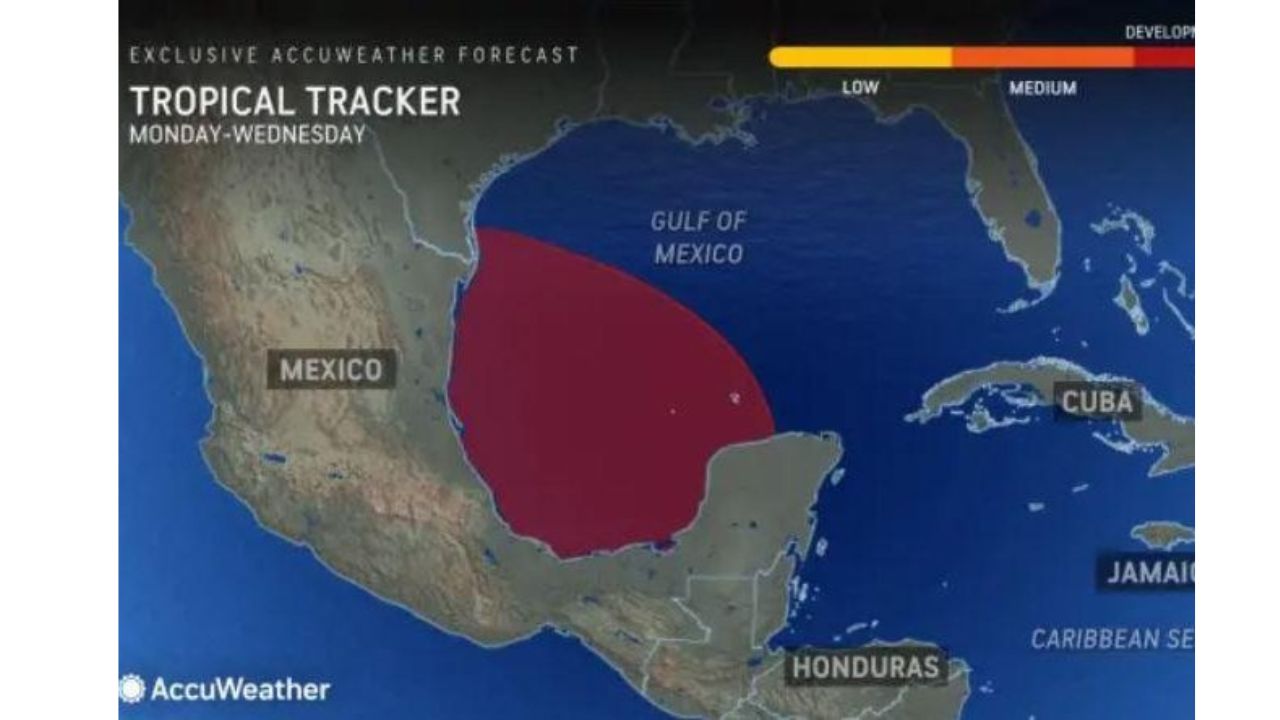Possibly, Tropical Cyclone One develops in the Mexican Gulf
This week, two possible tropical threats might signal the start of the Atlantic hurricane season. One of them could bring heavy rains and significant flooding risks to regions of Mexico, Central America, and the United States.
First System:
The southwest Gulf of Mexico is home to the most imminent tropical hotspot. Driven by the Central American gyre, there is a reasonable probability that the first system of what is expected to be a very active hurricane season may form there before Wednesday.
The gyre is a vast, haphazard region of thunderstorms and showers over Central America and the adjacent seas. It is enhanced by heavy tropical precipitation. Its wide spin and copious moisture aid in forming tropical systems when other essential elements, such as favorable upper-level winds and warm ocean water, come into alignment.

This week, all the conditions are met, and the first tropical storm or depression of the season is predicted to emerge from the gyre. If the system maintains winds of at least 39 mph over an extended period, it will become Tropical Storm Alberto.
By Wednesday night or early Thursday, any emerging system will sharply turn to the northwest and approach the coast of Mexico or southern Texas. In the next 48 hours, when the system becomes a center of circulation, more information on its precise intensity and track will become accessible. However, the system’s short duration above water will restrict its strength if it develops.
The Primary Danger to the System:
Regardless of tropical development, several days of torrential rain are expected to affect portions of Central America, southern Mexico, and the western Gulf Coast of the United States this week.
As the gyre churned, eady fell infections of Mexico, Guatemala, Belize, El Salvador, and Honduras on Monday. In certain regions, a total rainfall of ten inches is possible by Thursday. Parts of Mexico and Central America are scorching hot for weeks and need rain. However, persistently high rainfall would soon overwhelm dry soils that cannot absorb water at the rate it rains, creating hazardous floods.
Storms were being fueled by deep tropical moisture up to the western Gulf Coast of the United States. By the weekend, parts of coastal and southern Texas should get double-digit precipitation totals, while other parts of the Gulf Coast may see several inches by midweek.
On Monday, there is a level 2 of 4 risks of flooding rains from the Texas coast to southern Alabama. The risk rises to a level 3 of 4 in some regions of Texas and Louisiana.
The Weather Prediction Center warned on Monday that the air above the Gulf Coast will be filled with “incredible amounts of moisture” that may “easily” cause flash floods by Wednesday. Texas is still under a level 3 or 4 danger on Wednesday. (progressivedentalmn.com)
Heavy rain isn’t the most pleasant sight in some regions of the US Gulf Coast. After a soggy spring, June has been drier, but in eastern Texas and western Louisiana, the land and nearby rivers still hang on to much water.
Another Potential Tropical Danger:
As development begins in the Gulf of Mexico, another tropical menace is brewing in the Atlantic.
A possible tropical system later this week may originate from a region of showers and thunderstorms a few hundred miles east of the Bahamas. According to the National Hurricane Center, its chances of becoming a tropical cyclone are minimal.
The region of stormy weather has to coordinate several atmospheric components to become organized. Still, as it gradually moves westward over the next few days, there is potential for growth.
If a tropical system does form, it may move south of the heat dome, searing regions further north and near the Southeast United States by Thursday or Friday. Although the precise locations that might be affected remain unknown, anybody in the Carolinas or Florida should closely monitor the prediction as it becomes more specific over the next few days.
Regardless of development, areas of the Southeast coast may get drenching rain, and choppy waves may occur from the Bahamas to the mid-Atlantic coast.


Comments are closed, but trackbacks and pingbacks are open.